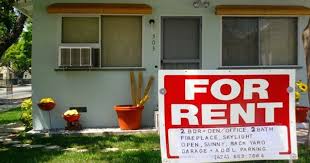OLD AND OVER THE HILL
Fewer people are arriving, the people who are there are having fewer kids, and more people are dying. Add it up, and it’s big trouble for the biggest state.
Reprint U.S. News Joel KotkinWendell Cox Published Dec. 31, 2021 3:29AM ET

California is suffering a major demographic reversal, one that threatens both the state’s economic future and the durability of its progressive model.
The numbers speak for themselves: The Golden State’s population has started declining for the first time, with new data from the state Department of Finance showing a population loss of 173,000 for the year ended July 1, 2021—a number that includes more than 56,500 pandemic related deaths, mostly of older Californians.
Net domestic migration hit a decade-long low, ballooning from a loss of 34,000 in 2012 to 277,000 in 2021. Over the last 10 years, California lost more than 1.625 million net domestic migrants—more than the population of Philadelphia. Altogether, 2.7 million more people—a population larger than the cities of San Francisco, San Diego and Anaheim combined—have moved to other states from California than the other way around over the last 20 years, and immigration is no longer making up the difference.
Many in the state’s media and political establishment insist that the demographic decline is a “myth” concocted by red-state haters. It’s not. The state that attracted America’s domestic migrants through the 20th century is losing millions of them in the 21st century.
This isn’t the Rust Belt of the 1970s, but the exodus out of the state and especially its metropolitan areas seems to be accelerating. From 2000 to 2020, Census Bureau estimates indicate that metro Los Angeles has lost 2.2 million net domestic migrants, metro San Francisco 400,000, metro San Diego 200,000 and metro San Jose 400,000—even as the rest of the state saw a net gain of 600,000.
Some California boosters comfort themselves by insisting the people leaving are mostly poor or old. But an analysis of IRS data from 2012 to 2019 indicates that 85 percent of those leaving are in their prime earning years of 25 to 64. In 2019, the largest share of net domestic migrants, 27 percent, was in the 35-44 age category, while 21 percent were aged 55-64. At the same time, the state is seeing a decline in the young, restless new arrivals who have traditionally driven California’s innovative and entrepreneurial economy.
In fact, Los Angeles between 2013 and 2017 ranked only behind New York City for the largest net loss of millennials, notes Brookings Many younger people now choose Dallas-Fort Worth, Austin, Houston, and Denver metros, as well as Riverside-San Bernardino, Sacramento and smaller interior metros in California. The days when California could depend on accruing brain power appear to be at an end. During the 2010s, California’s rate of college educated (BA and above) residents 25 and over rated 34th among the states, lagging the increase in the national rate and well behind such key competitors as Florida and Texas.
Critically, this is not an exodus primarily of the poor. Only 14 percent of the increased net domestic migration from 2012 to 2019 has been among those making less than $25,000, according to IRS data, while those making more than $100,000 accounted for 38 percent of the exodus (and the rate of departure was even higher for those making far more).
As more Californians enter their thirties, the middle-class emigration could quicken. Roughly half of state residents have considered leaving the state, according to a 2019 UC Berkeley poll.
The mood hasn’t changed during the pandemic with more than half of Californians now saying they are considering a move out. In Los Angeles, according to a USC survey, 10 percent plan to move out this year. More recently, another survey, this one from the Public Policy Institute of California, found that nearly two-thirds of Californians think that today’s children will be worse off than their parents.
Housing costs, according to the recent Berkeley poll, was by far the biggest factor cited by people wanting to move, with more than 70 percent of Californians considering them “a very serious issue.” Since 1970, income-adjusted median home values in Los Angeles, San Francisco, San Diego, and San Jose have increased to more than double those of major metros outside California. Even the less costly interior markets of Riverside-San Bernardino, Sacramento, and Fresno are increasingly unaffordable compared to metros outside California.
This is particularly critical for young families. Despite pundits suggesting otherwise, the vast majority of millennials and the Z generation would like to become homeowners. According to one recent study, the median family in San Jose or San Francisco would need 125 years (150 in Los Angeles) to collect a down payment; in Atlanta or Houston the figure is 12 years. According to recent AEI survey, California is home to six of the nation’s worst markets for first-time home buyers.
While the pandemic may not have impacted California as lethally as elsewhere, affordable housing will be critical at a time when many workers — including 50 percent of Silicon Valley — can work remotely from less expensive, and congested, places. The state’s hostility to suburban and ex-urban development, a critical component in its sky-high property prices, directly increases housing prices and rents, and threatens to reduce the available workforce even for the strongest remaining parts of its economy.
Disadvantaged minorities and the foreign born are also heading to the exits, or simply not coming. According to the United Way of California, over 30 percent of California residents—including 40 percent of African Americans and 50 percent of Latino— lack sufficient income to meet their basic cost of living. Incomes for African Americans and Hispanics rank 48th to 50th in the nation, while home ownership rates are among the lowest as well. In terms of cost-of-living adjusted income, African Americans in California do about as well as those in states with reputations for poverty such as Mississippi and Louisiana, and well below that for Texas, Virginia, or Michigan, according to research to be published next month by Chapman University.
The Latino population in California rose at only one-half the national rate from 2010 to 2019, while California’s Black population grew by only 0.8 percent, well below the 7.2 percent national rate and even further below the rates of Florida and Texas. Over the past two decades, the African American household population has declined in San Francisco and Los Angeles.
There’s also been a relative decline of the foreign-born population, which has for years floated California’s demographic boat. Los Angeles, according to a recent study we did for Heartland Forward, suffered a net decline in its foreign-born population over the last decade while rivals like Dallas-Ft. Worth, Nashville, Houston, Phoenix and Las Vegas have enjoyed double digit-growth, in some places approaching 30 percent.
Perhaps most disturbing in the long run has been the rapid decline in families. California’s coastal metropolitan areas exhibit particularly small percentages of school-aged children. Out of the nation’s 53 major metropolitan areas in 2019, San Francisco ranked 52nd (leading only Pittsburgh), San Diego 42nd, Los Angeles 38th and San Jose 33rd. Since 2007, the fertility rate across the country has dropped from 2.1 to 1.6 but California’s fell faster, from 2.2 to about 1.5. Notably, Latina women had the largest decline in California, and now also have birth rates below replacement level of 2.1.
Long seen as a paragon of youthful energy, California is inexorably getting older. From 2010 to 2018, California aged 50 percent more rapidly than the rest of the country. By 2036, seniors will be a larger share of the population than people 19 and under.
For generations, the Golden State represented the model for the American future. Whether it was movies, muscle cars, the sexual revolution or fashion, Californians always felt we were “where it’s at.” But without changed policies, the state’s signature surfboard could be replaced by the walker.

